Introduction to the History of Valentine’s Day
Valentine’s Day, celebrated on February 14th each year, is synonymous with love, chocolates, and heart-shaped everything. But have you ever stopped to wonder how this tradition came about? The history of Valentine’s Day is a fascinating blend of ancient rituals, heroic legends, and the evolution of romantic traditions over centuries. Let’s dive into the whimsical and wonderful history of this day dedicated to love.
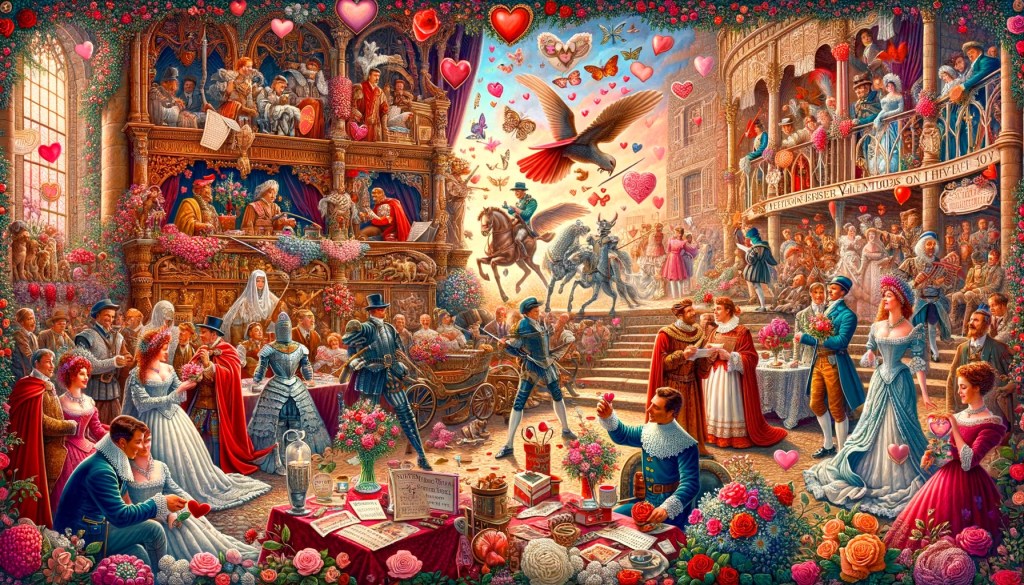
Ancient Origins: A Festival of Fertility
Our journey begins in ancient Rome with the festival of Lupercalia, celebrated from February 13th to 15th. This was not your typical romantic holiday; instead, Lupercalia was a fertility festival dedicated to Faunus, the Roman god of agriculture, and to the Roman founders Romulus and Remus. Priests would sacrifice goats and a dog, use the goat hide to whip women as a fertility rite, and then pair off men and women through a matchmaking lottery. Quite the start for a holiday now filled with sweet nothings and love letters!
St. Valentine: The Man Behind the Holiday
The transition from a pagan festival to a Christian feast day is where St. Valentine enters the scene—or, more accurately, several St. Valentines. The Catholic Church recognizes at least three different saints named Valentine or Valentinus, all of whom were martyred. One legend suggests that Valentine was a priest in Rome who performed marriages for young lovers in secret, defying Emperor Claudius II’s ban on marriage for young men, whom he believed made better soldiers when unattached. Valentine’s defiance and emphasis on love led to his execution, but his legacy as a romantic hero endured.
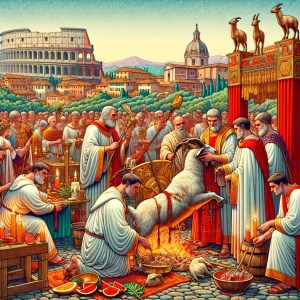
From Paganism to Christianity: The Transformation
As Christianity spread through Europe, pagan holidays were often repurposed with Christian significance. Pope Gelasius I, in the 5th century, declared February 14th as St. Valentine’s Day, overlaying it on the Lupercalia festival, which the church sought to Christianize. However, it wasn’t until the Middle Ages that Valentine’s Day became associated with love and romance, a sentiment echoed in the writings of Geoffrey Chaucer and his contemporaries, who celebrated Valentine’s Day as a time for lovers.
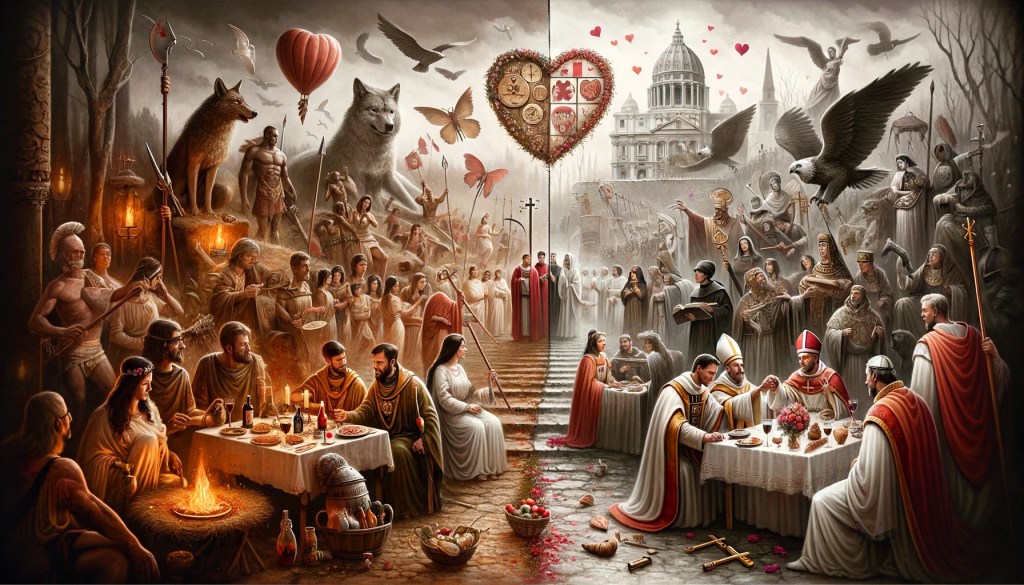
The Evolution of Valentine’s Day Traditions
By the 17th century, Valentine’s Day was popularly celebrated in Great Britain and France, with friends and lovers exchanging small tokens of affection or handwritten notes. By the 18th century, this practice had evolved to include the exchange of hand-crafted valentines, often decorated with images of hearts, love knots, and cupids, which were symbols of love and companionship.
The industrial revolution further transformed Valentine’s Day with advances in printing technology, leading to the mass production of valentines. Esther A. Howland, known as the “Mother of the Valentine,” began selling the first mass-produced valentines in America in the 1840s, featuring elaborate designs with real lace and ribbons.
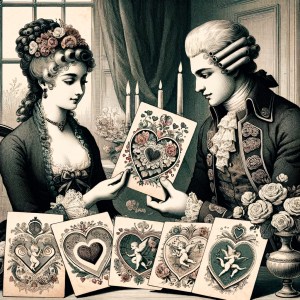
The Commercialization of Valentine’s Day
The commercial aspect of Valentine’s Day began to bloom in the 19th century, especially with the mass production of Valentine’s Day cards. This section could delve into how commercialization has shaped the holiday, from the Victorian era’s elaborate Valentine’s cards to today’s billion-dollar industry encompassing chocolates, jewelry, and romantic getaways. It could explore both the positive effects of this commercialization, such as the boost to small businesses and the economy, and the criticisms it faces for distorting the holiday’s original sentiments of genuine love and affection.
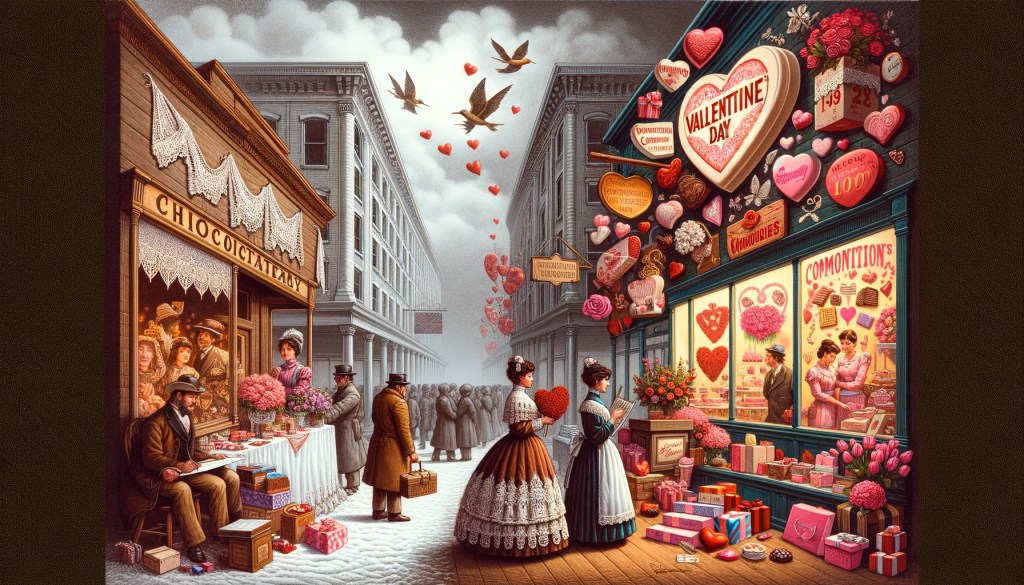
Valentine’s Day Today: A Global Celebration of Love
Today, Valentine’s Day is celebrated in various ways around the world. It has transcended its origins to become a global celebration of love and affection, not just between romantic partners but also among friends and family. From elaborate dinners and marriage proposals to simple acts of kindness and the exchange of Valentine’s cards, the ways to celebrate love are as diverse as the stories behind this holiday.
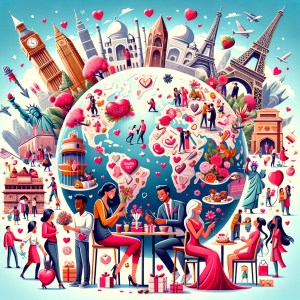
Valentine’s Day Around the World
Valentine’s Day is celebrated globally, but not all countries observe it in the same way. This section could explore unique traditions from around the world, such as Japan’s “White Day,” where men return gifts received on Valentine’s Day, or the Welsh tradition of giving hand-carved wooden spoons, known as “lovespoons.” Highlighting these diverse customs emphasizes the universal nature of love while showcasing cultural nuances.
Alternative Celebrations
In response to the traditional romantic focus of Valentine’s Day, some people celebrate alternative holidays. Galentine’s Day on February 13th, for example, celebrates platonic love among women friends. Singles Awareness Day (S.A.D.), celebrated on February 15th, serves as a humorous counterpoint to Valentine’s Day, emphasizing self-love and the joy of being single. Including these alternatives offers a broader perspective on love and relationships in the modern era.
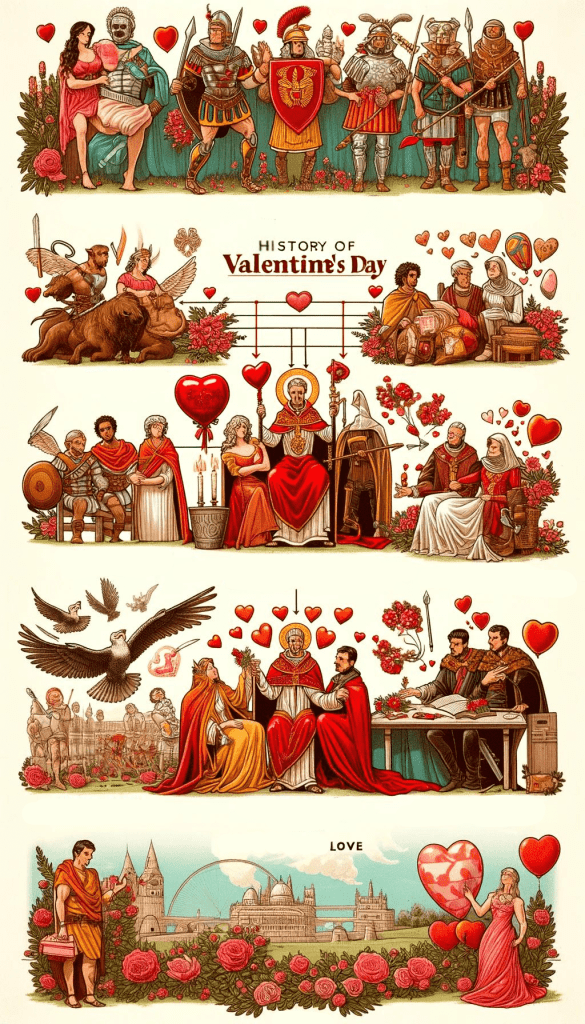
Conclusion
The history of Valentine’s Day is a tapestry woven from ancient traditions, legends of bravery, and the universal human desire to connect and express love. From its raucous beginnings in pagan festivals to its status today as a global celebration of all forms of love, Valentine’s Day reminds us of the power of love to transcend time, culture, and even the origins of its celebration. So, whether you’re toasting to your significant other, sharing moments with friends, or indulging in some self-love, remember the rich history that makes February 14th a day worth celebrating.
Isn’t it fascinating how a day that once involved matchmaking lotteries and fertility rites has evolved into our modern Valentine’s Day, filled with chocolates, flowers, and heartfelt notes? It’s a reminder of how traditions transform over time, adapting to the values and customs of the day while retaining a core essence—a celebration of love, in all its forms.
















Its like you read my mind You appear to know a lot about this like you wrote the book in it or something I think that you could do with some pics to drive the message home a little bit but instead of that this is fantastic blog An excellent read I will certainly be back
I will definitely add some more images, thank you for the feedback! I am so happy you enjoyed my post, that made my day!
“Gratitude is the foundation of a happy life, and your posts are the bricks that build that foundation. Thank you for the strength and stability!”
Thanks for sharing. I read many of your blog posts, cool, your blog is very good.
Many thanks for the kind words and for delving into our blog posts! It’s heartening to know that you find the content to be valuable. Stay tuned for more updates and discussions — and don’t forget, you can dive even deeper into topics by joining the conversation in our Simply Sound Society forum. We’re grateful to have you as part of our community and look forward to sharing more that you’ll enjoy. Happy reading!